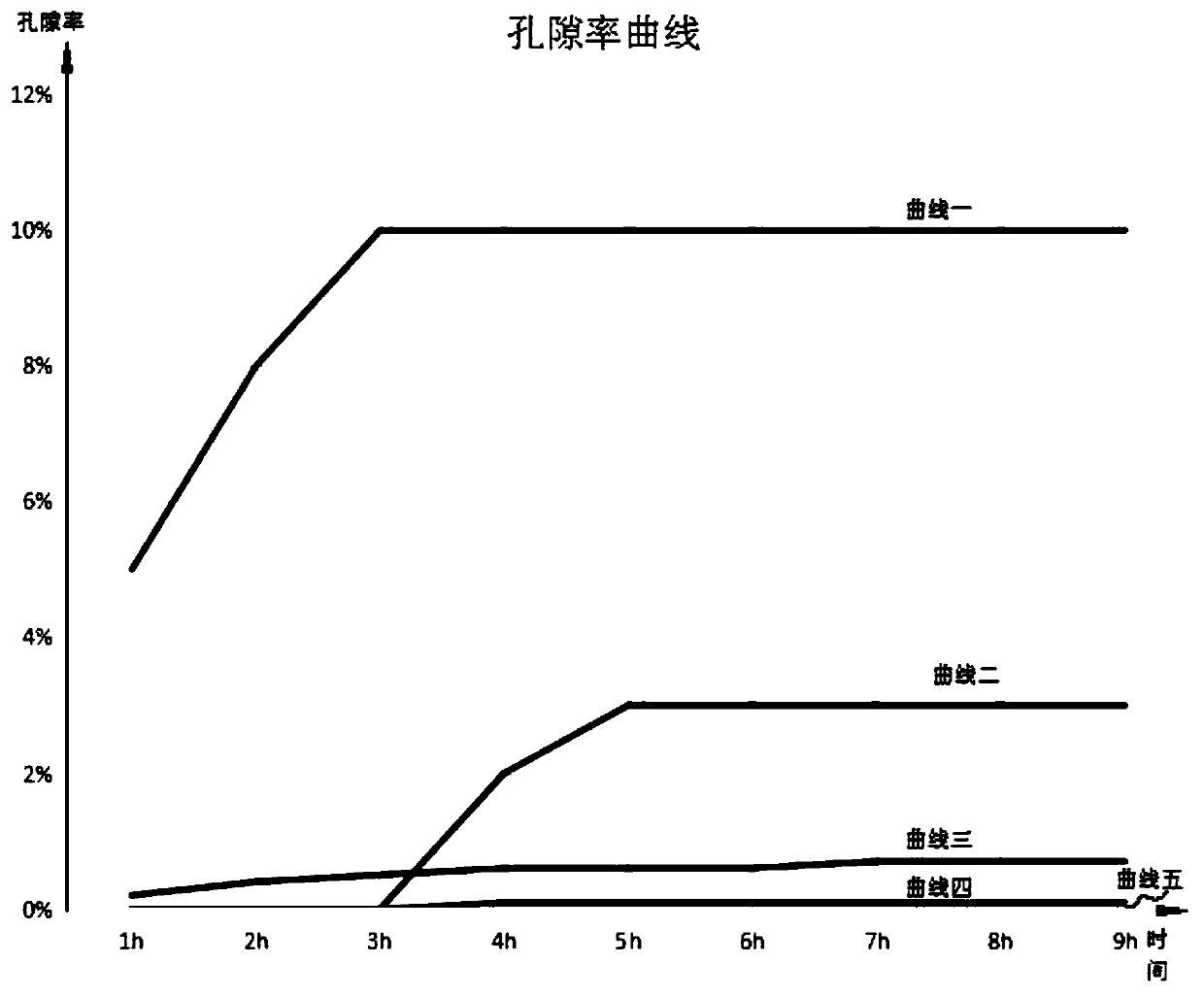A thermosetting insulating filler and its molding process
A technology of insulating filling and forming process, applied in inorganic insulators, quartz/glass/glass enamel, etc., it can solve the problems of insulating material working temperature not exceeding 180℃, unsuitable heating tube, loose magnesia powder, etc., to achieve curing effect Good, Inexpensive, and Easy-to-Get Results
- Summary
- Abstract
- Description
- Claims
- Application Information
AI Technical Summary
Problems solved by technology
Method used
Image
Examples
Embodiment 1
[0022] A thermosetting insulating filler, comprising the following components in mass percentage:
[0023] Fused silica sand is 65%, aluminum dihydrogen phosphate powder is 4%, and the balance is water.
[0024] The particle size of the fused silica sand is 200-400 mesh.
[0025] A molding process of a thermosetting insulating filler, comprising the following process steps:
[0026] The first step: batching: mix each component uniformly according to the ratio to make a slurry material;
[0027] The second step: filling: fill the required position with the slurry material prepared in the first step;
[0028] Step 3: Drying and forming in sections.
[0029] The segmented method includes the following steps:
[0030] S1. Stand still for 3 hours;
[0031] S2, baking at 70°C for 3 hours;
[0032] S3. Baking at 120° C. for 3 hours and then molding.
Embodiment 2
[0034] A thermosetting insulating filler, comprising the following components in mass percentage:
[0035] Fused silica sand is 72%, aluminum dihydrogen phosphate powder is 2%, and the balance is water.
[0036] The particle size of the fused silica sand is 200-400 mesh.
[0037] A molding process of a thermosetting insulating filler, comprising the following process steps:
[0038] The first step: batching: mix the components uniformly according to the ratio to make a slurry material; the second step: filling: fill the required position with the slurry material prepared in the first step;
[0039] Step 3: Drying and forming in sections.
[0040] The segmented method includes the following steps:
[0041] S1. Stand still for 6 hours;
[0042] S2, bake at 80°C for 6 hours;
[0043] S3. Baking at 130° C. for 2 hours and then molding.
Embodiment 3
[0045] A thermosetting insulating filler, comprising the following components in mass percentage:
[0046] Fused silica sand is 69%, aluminum dihydrogen phosphate powder is 3%, and the balance is water.
[0047] The particle size of the fused silica sand is 200-400 mesh.
[0048] A molding process of a thermosetting insulating filler, comprising the following process steps:
[0049] The first step: batching: mix the components uniformly according to the ratio to make a slurry material; the second step: filling: fill the required position with the slurry material prepared in the first step;
[0050] Step 3: Drying and forming in sections.
[0051] The segmented method includes the following steps:
[0052] S1. Stand still for 5 hours;
[0053] S2, bake at 90°C for 4 hours;
[0054] S3. Baking at 125° C. for 2.5 hours and then molding.
PUM
| Property | Measurement | Unit |
|---|---|---|
| particle size | aaaaa | aaaaa |
Abstract
Description
Claims
Application Information
 Login to View More
Login to View More - R&D
- Intellectual Property
- Life Sciences
- Materials
- Tech Scout
- Unparalleled Data Quality
- Higher Quality Content
- 60% Fewer Hallucinations
Browse by: Latest US Patents, China's latest patents, Technical Efficacy Thesaurus, Application Domain, Technology Topic, Popular Technical Reports.
© 2025 PatSnap. All rights reserved.Legal|Privacy policy|Modern Slavery Act Transparency Statement|Sitemap|About US| Contact US: help@patsnap.com



